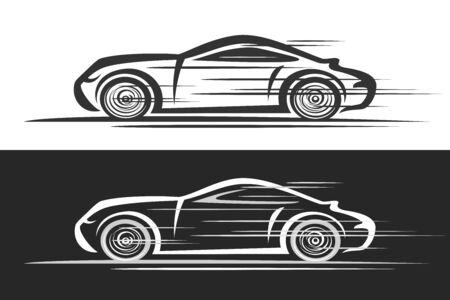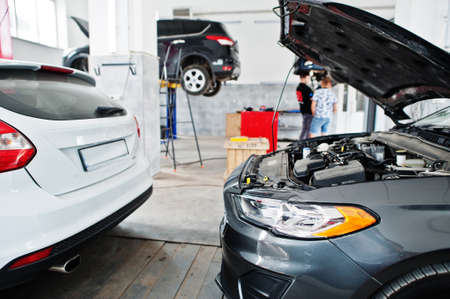1. Understanding What a Camshaft Does
If you’ve ever wondered what really makes your car tick, the camshaft is one of the key players under the hood. Think of it as the conductor in an orchestra, making sure every part moves at just the right time. In a typical internal combustion engine, the camshaft’s main job is to control when the engine’s intake and exhaust valves open and close. This precise timing is crucial—it decides how much air and fuel gets in, and how efficiently exhaust gases get out.
How a Camshaft Works
The camshaft is a metal rod with specially shaped lobes (called cams) along its length. As the camshaft spins, each lobe pushes against a valve lifter or rocker arm, causing the valve to open for a set amount of time before closing again. This sequence happens over and over with each rotation of the camshaft, perfectly synchronized with the movement of the pistons below.
Why Camshaft Design Matters
The shape and positioning of those lobes—the cam profile—directly affect engine performance. A mild cam allows for smooth idling and better fuel economy, while a more aggressive performance cam lets more air and fuel in at higher RPMs for increased power. Here’s a quick look at how different cam profiles influence engine behavior:
| Cam Profile Type | Idle Quality | Low-End Power | High-End Power | Fuel Efficiency |
|---|---|---|---|---|
| Mild/Stock | Smooth | Strong | Limited | Better |
| Performance/Aftermarket | Rough/Choppy | Reduced | Increased | Lower |
The Big Picture: Why It All Matters
A well-designed camshaft makes all the difference between an engine that just “runs” and one that truly performs. Whether you want daily drivability or race-ready horsepower, understanding how your camshaft works is the first step toward unlocking your engine’s full potential.
2. How Camshaft Profiles Influence Engine Behavior
When it comes to squeezing more performance out of your engine, the camshaft plays a starring role. But what exactly makes one camshaft different from another? Let’s break down the key specifications—lift, duration, and lobe separation—and see how each one shapes your engines personality, affecting horsepower, torque, and where your powerband sits.
Understanding Key Camshaft Specs
| Spec | What It Means | Effect on Engine |
|---|---|---|
| Lift | How far the valve opens | More lift lets in more air and fuel, boosting potential power |
| Duration | How long the valve stays open (measured in crank degrees) | Longer duration favors high RPM power but can hurt low-end response |
| Lobe Separation Angle (LSA) | The angle between intake and exhaust lobes | Narrow LSA increases overlap for a lumpier idle and high-RPM gains; wide LSA smooths things out and broadens the torque curve |
How These Specs Change Engine Behavior
Lift: Think of lift as how much “breathing room” you’re giving your engine. More lift means the valves open wider, allowing more air and fuel in—great for making extra horsepower. But go too high and you may need stiffer springs or upgraded parts to avoid problems.
Duration: Duration is about timing—how long those valves stay open. Longer duration cams keep valves open longer, which helps at higher RPMs because there’s less time for air to get in and out. The trade-off? You might lose some low-speed grunt and daily drivability.
Lobe Separation Angle (LSA): LSA changes the “personality” of your engine. A narrow LSA (like 106°) gives you a choppier idle and strong mid-to-high RPM pull, popular in muscle cars and hot rods. A wide LSA (like 114°) smooths things out, making your ride easier to drive around town while spreading torque over a broader range.
Quick Reference: Cam Profile Choices & Their Effects
| Profile Type | Main Effect | Best For |
|---|---|---|
| Mild (Low Lift/Short Duration) | Smoother idle, good low-end torque, easy street driving | Daily drivers, trucks, cruisers |
| Aggressive (High Lift/Long Duration) | Lumpy idle, strong top-end power, needs supporting mods | Race cars, weekend warriors, drag racing |
| Narrow LSA (e.g., 106°) | Louder idle, stronger high-RPM surge, narrower powerband | Performance builds seeking max output up top |
| Wide LSA (e.g., 114°) | Smoother operation, broader torque curve, better vacuum for accessories like brakes | Street machines with comfort and drivability in mind |
The Takeaway on Cam Profiles
Tuning your camshaft profile is all about matching your build to how you actually use your vehicle. Whether youre after streetable torque or track-day horsepower, understanding these specs helps you make smarter choices for your engine goals.

3. The Science of Valve Timing and Its Impact
Understanding Valve Timing Basics
Valve timing refers to the precise moments when your engine’s intake and exhaust valves open and close during the four-stroke cycle. These events control how air-fuel mixture enters the combustion chamber and how exhaust gases exit. The timing is critical because it affects everything from power delivery to fuel efficiency and emissions.
Key Valve Events Explained
| Event | Description |
|---|---|
| Intake Valve Opening (IVO) | When the intake valve starts to open, allowing the air-fuel mix into the cylinder. |
| Intake Valve Closing (IVC) | The point when the intake valve closes, trapping the mixture inside for combustion. |
| Exhaust Valve Opening (EVO) | When the exhaust valve opens to let burnt gases escape. |
| Exhaust Valve Closing (EVC) | The moment the exhaust valve closes, sealing the cylinder for a new cycle. |
How Performance Camshafts Change Valve Timing
Performance camshafts adjust these opening and closing points to change how long valves stay open (duration) and how much they open (lift). By tweaking these parameters, a performance camshaft can help your engine breathe better at higher RPMs or make it feel more responsive in daily driving.
Main Ways Camshafts Affect Performance
| Camshaft Feature | Effect on Engine Behavior |
|---|---|
| Increased Duration | Keeps valves open longer for better high-RPM airflow—great for racing but may cause rough idle. |
| Higher Lift | Opens valves wider, letting in more air/fuel for increased power potential. |
| Lobe Separation Angle (LSA) | Affects overlap between intake and exhaust events; tighter LSA increases overlap for more top-end power, wider LSA smooths idle and improves low-end torque. |
Tuning Valve Timing for Different Goals
If you want maximum horsepower at high RPMs, a performance camshaft will have longer duration and higher lift. For street driving, milder cams with shorter durations can keep drivability smooth and maintain good fuel economy. It’s all about choosing the right balance based on how you use your vehicle.
4. Performance Gains vs. Everyday Driveability
Understanding the Trade-Offs
When it comes to performance camshafts, many car enthusiasts dream of unlocking more horsepower and torque. However, there’s always a balance between chasing maximum power and keeping your ride enjoyable for daily driving. Before you decide to swap out your stock camshaft for a performance model, its important to understand how these changes can affect your car’s behavior on the street.
What Happens When You Install a Performance Camshaft?
A performance camshaft is designed to keep the valves open longer or lift them higher, which helps your engine breathe better at high RPMs. This can give you that thrilling surge of power when you floor it. But with these gains come some downsides—especially if your car spends more time in traffic than on the track.
Main Differences: Performance vs. Stock Camshafts
| Feature | Stock Camshaft | Performance Camshaft |
|---|---|---|
| Power Band | Smoother, low-mid RPM | High RPM-focused, peakier |
| Idle Quality | Smooth and quiet | Lumpy, rougher idle |
| Fuel Economy | Optimized for efficiency | Usually decreased |
| Emissions Compliance | Meets factory standards | May not pass emissions tests |
| Daily Comfort | User-friendly in all conditions | Might be harder to drive in stop-and-go traffic |
| Maintenance Needs | Minimal extra care needed | May require upgraded springs, tuning, etc. |
Things Enthusiasts Should Consider Before Upgrading Their Camshaft
- Your Driving Habits: If most of your driving is around town or on the highway, a wild race cam might make your commute less enjoyable. Mild “street” cams can offer a good compromise.
- Supporting Mods: A performance cam often needs other upgrades like stronger valve springs, better fuel delivery, and custom engine tuning.
- Legal Requirements: Some aggressive cams may cause your car to fail emissions testing or inspection in states like California.
- Budget: Beyond the price of the camshaft itself, factor in installation costs and any necessary supporting parts.
- Your Goals: Are you building a weekend warrior or an all-out drag machine? Set realistic expectations based on how you plan to use your car.
The Bottom Line on Choosing Your Camshaft Setup
A well-chosen camshaft upgrade can transform your engine’s character, but it’s crucial to pick one that matches both your performance goals and your everyday needs. Take time to research, talk with reputable shops or experienced enthusiasts, and don’t forget to think about how you actually use your car before making the leap into bigger performance mods.
5. Choosing and Installing the Right Performance Camshaft
Picking the Perfect Camshaft for Your Ride
Choosing a performance camshaft isn’t just about grabbing the biggest or meanest-looking one off the shelf. It’s all about matching your cam to how you plan to use your vehicle. Here are some straightforward tips to help you decide:
| Intended Use | Camshaft Profile | What Youll Get |
|---|---|---|
| Daily Driving/Street Use | Mild to Moderate Lift & Duration | Smoother idle, better low-end torque, good fuel economy |
| Weekend Warrior/Street-Strip | Moderate to Aggressive Lift & Duration | More horsepower at higher RPMs, lumpier idle, possible need for upgrades (springs, stall converter) |
| Track/Race Only | Aggressive Race Grind | Maximum power at high RPM, rough idle, not street-friendly, requires supporting mods |
What to Consider Before You Buy
- Engine Compression Ratio: Higher lift cams often need higher compression ratios.
- Gear Ratio: A steeper rear gear helps maximize a big cams power band.
- Torque Converter (for automatics): Big cams may require a higher stall speed.
- Valve Springs and Lifters: Upgrading these is sometimes necessary with aggressive cams.
- ECU Tuning: Modern engines usually need a tune after cam swap for best results.
Quick Look: Installation in an American Workshop
If you’re installing a camshaft in a typical American garage, here are a few things to expect:
- Tear Down: Youll be removing valve covers, timing cover, and maybe even radiator or grille for clearance.
- Special Tools: A cam degree kit is helpful for precise installation; torque wrenches are a must.
- Lube Everything: Use assembly lube on lobes and journals for that crucial first startup.
- TDC Matters: Make sure the engine is at Top Dead Center before pulling the old cam.
- Follow Break-In Procedures: Especially critical with flat tappet cams—run the engine at 2,000–2,500 rpm for 20–30 minutes on first startup if required.
A Few Pro Tips:
- If in doubt, call the cam manufacturer’s tech line—they’ve heard it all and can help you avoid costly mistakes.
- Aim for a cam that matches your daily needs; bigger isn’t always better!
If you’re looking to get more out of your engine without sacrificing reliability or drivability, picking the right cam and following smart installation practices will make all the difference.

